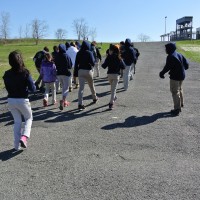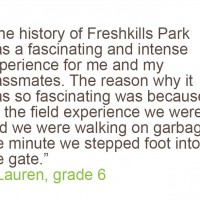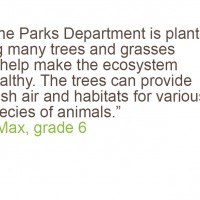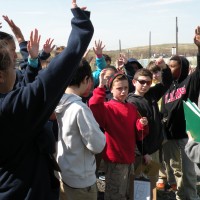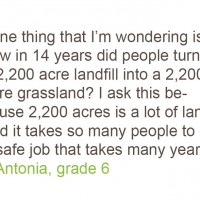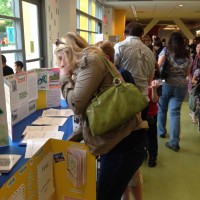From Trash to Treasure: Freshkills Park as a Classroom Case Study
- MAELS students hiking up the north mound of Freshkills Park during their April field trip
- Reflection on Freshkills Park from a MAELS student
- Landfill layers on a poster exhibited at the MAELS “Trash to Treasure” Symposium
- Reflection on Freshkills Park from a MAELS student
- MAELS students on their April field trip of Freshkills Park
- Reflection on Freshkills Park from a MAELS student
- The MAELS “Trash to Treasure” Symposium
- Reflection on Freshkills Park from a MAELS student
- A student poster exhibited at the MAELS “Trash to Treasure” Symposium
For the sixth grade students at Marsh Avenue Expeditionary Learning School (MAELS), their visit to Freshkills Park was not an ordinary field trip. Like any group of students on a Freshkills Park walking tour, they played the role of park planners as they designed structures to keep stray soccer balls out of the landfill gas well heads, worked together to decipher the correct order for a series of maps about the park’s history, and participated in stakeholder role-playing exercise where they debated priorities for the future park. However, unlike most other field trip participants, for these students their field trip in early April represented the culmination of many months of study about Freshkills Park and the local ecosystems.
These sixth graders came to their field trip at Freshkills Park with a mission: to determine if the former landfill could be turned into a successful and healthy ecosystem. They made insightful comments, wanting to know the details of the landfill cap, eagerly pointing out the wildlife to one-another, and offering their suggestions for the future park. During their “Trash to Treasure” Exhibition, they had already studied the various ecosystems on Staten Island, and this final case study provided the opportunity for them to put their newly-acquired knowledge to the test. At MAELS, learning is organized into a series of expeditions that span disciplines and provide focus for a hands-on approach to learning. For instance, an eighth grade expedition on immigration draws inspiration from music, service learning, field trips, and photographs.
This expeditionary learning style meant that Freshkills Park was not only discussed in science classes, but that it had also provided a guiding focus for most of their coursework. As part of the “Trash to Treasure” expedition, students also looked at the trash of Ancient Greece to study the markers of civilization in their social science classes. They took surveys for math class, asking whether turning Freshkills into a park is beneficial to the community and analyzing these results across age and gender lines. These results and the facts gleaned from their science courses and literature provided the basis for an argumentative essay for their English and Language Arts class. All of this learning was on proud and colorful display at their annual Symposium on May 20th.
The teachers at MAELS are not the only ones who have recognized the power of using Freshkills Park as a case study. At Berkeley Carroll School, first grade students are building a model landfill. Students at the College of Staten Island use Freshkills Park as a catalyst for their discussions about succession and restoration ecology. How are you talking about Freshkills Park in your classroom? For more ideas, check out the lesson plan generously shared by Nicholas Schettini, the science teacher at MAELS, and our new pre- and post- trip activities.

